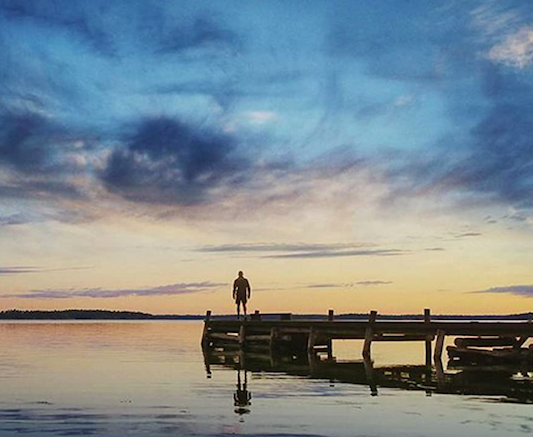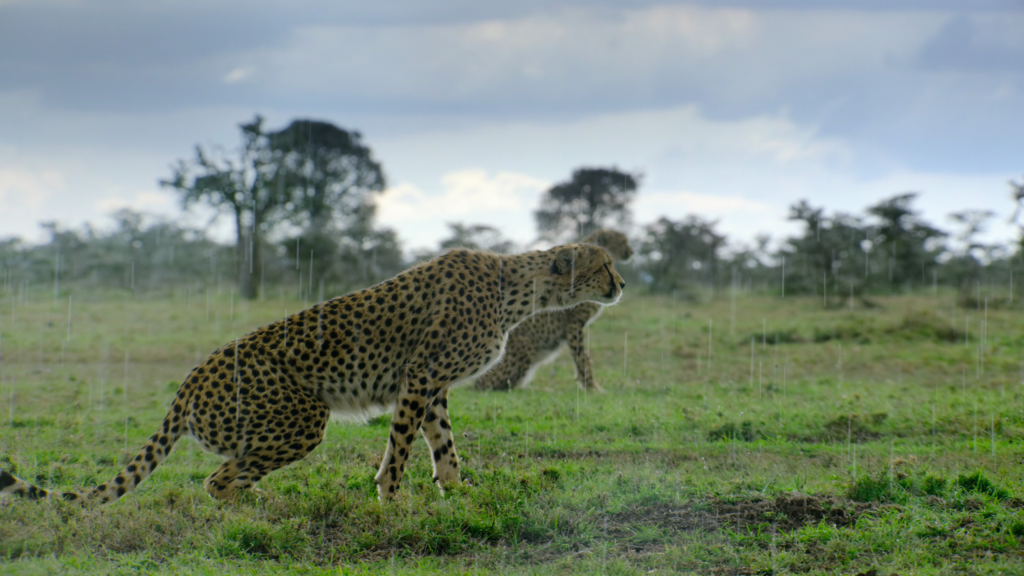
The Netflix Original Documentary Breaking Boundaries: The Science of Our Planet is a forthright and mind-boggling call to action to save our Earth. The film will be available on the platform from June 4th.
This is not the first time Sir David Attenborough has used his expertise as broadcaster and natural historian to spread awareness on how to protect the beauties of our natural world. This is his third project with Netflix, following Our Planet (for which he won the Outstanding Narrator Emmy alongside the show’s victory in the Outstanding Documentary or Nonfiction Series category) and David Attenborough: A Life on Our Planet.
This time, Sir David Attenborough has joined forces with leading scientist Johan Rockström, who examines the avalanche of risks we are now taking with the stability of our planet and what we can do to avert the crisis. The documentary produced by Silverback Films in association with Indikate Productions, is an eye-opening concentration about all the planetary thresholds human beings have trespassed. Throughout 75 minutes, we traverse all the adversities caused by mankind, since the industrial revolution until today, that are jeopardising not just environmental stability but also the future of our species.

The premise to which we are introduced is how there used to be the Holocene era, that lasted for over ten thousand years, and it roughly coincided with the effects of modern humans on planet earth. The real game changer was the advent of the Anthropocene epoch, when humans had a significant impact on the earth with the development of atomic technologies and the advent of global climate change – attested by the alarming evidence of the melting of the ice caps, the depletion of the ozone layer, the acidification of our oceans and the reduced availability of freshwater. We are still living in the Anthropocene, and the film encourages, without being preachy or reprimanding, to take a stand from a community level to an international level to return to the Holocene.
This cinematic voyage throughout sustainable development for a better future, features interviews with experts from around the world. Their scientific testimonies act as emotional triggers as they enlighten audiences on the perils the Earth is traversing. For instance, it is utterly overwhelming to listen to Professor Jason Box, from the Geological Survey Of Denmark and Greenland, when he describes that if humans do not manage to cool the planet Greenland will be gone. The same pathos can be perceived when Professor Carlos Nobre, from the Institute of Advanced Studies, University of São Paulo, explains the current situation of the Amazon; and how close we are getting to the point where 50-60% of the rainforest could lead to the so called ‘savanisation’ of the area, causing an incredible loss to this natural haven.
Prof. Ricarda Winkelmann, from the Potsdam Institute for Climate Impact Research, further exposes how everything in the Earth system is connected and that any kind of damage causes a domino effect. Especially since greenhouse gases have reached a global tipping point. French ecologist Dr. Anne Larigauderie further enhances how we must aim at zero loss of nature from now onwards, since both flora and fauna have been comprised by man’s actions. The examples we are given in these regards by other experts are heart wrenching, like the coral bleaching on the Great Coral Reef or the way cockatoos in Australia are facing extinction. Just as troubling are the issues of water scarcity and eutrophication in marine habitats, as well as the novel entities, like as nuclear waste and micro-plastics, that have been interacting with the Earth in a catastrophic way.

The most shocking acknowledgement one brings back home, relates to what we are going through right now: Covid 19. This pandemic has had a planetary impact, and the World Health Organization had forewarned it was coming. Human health, animal health, environmental health are all linked. That is why zoonotic diseases spread in the human population when nature’s resilience is weakened. Thus, it’s not healthy nature that causes pandemics, but one that has been pushed to its limits.
In these regards, even though Breaking Boundaries: The Science of Our Planet makes no mention of it, this topic evokes James Lovelock’s Gaia Hypothesis that sees the Earth and its natural cycles as a living organism. Lovelock argued back in the Seventies how humans had pushed Gaia to her limit — this was the time when environmentalism grew in prominence as a consequence of pollution, population growth and the energy crises that demonstrated the depletion of finite resources. At the time James Lovelock further hypothesised that Gaia would pull things back into check, but it could be too late for the human race. His apocalyptic prediction seems to be the subtext of the analysis done in the film about the pandemic.
However, the documentary does not wrap its narrative with an irredeemable dystopian conclusion. It presents a variety of solutions: from switching to a healthy flexatarian diet, to making sure the global temperature is kept below 1.5C°, from cutting emissions drastically, to reducing waste by creating a circular system. And most importantly the planting of trees can go a long way to solve this crisis. We are left with an inspirational guide on how to cherish and save our home, and we are further bestowed with an important deadline: 2030. This is the time in which change must be enacted; reinforcing the statement of how this is the decisive decade to save the Earth and consequently mankind. As Sir David Attenborough expressed “Life’s intricate complexity is essential for our own survival.”
Final Grade: B+

